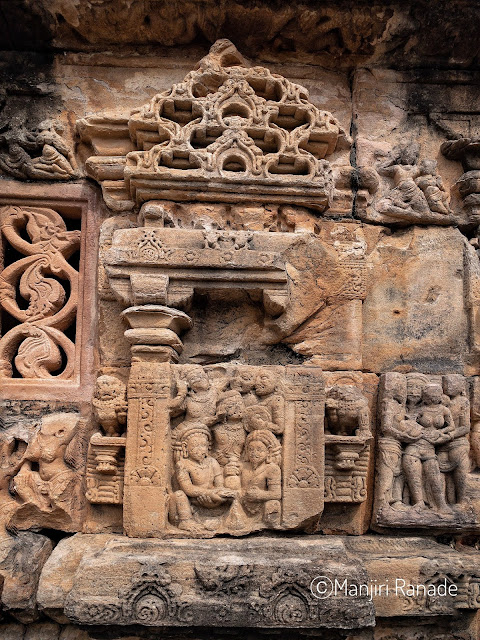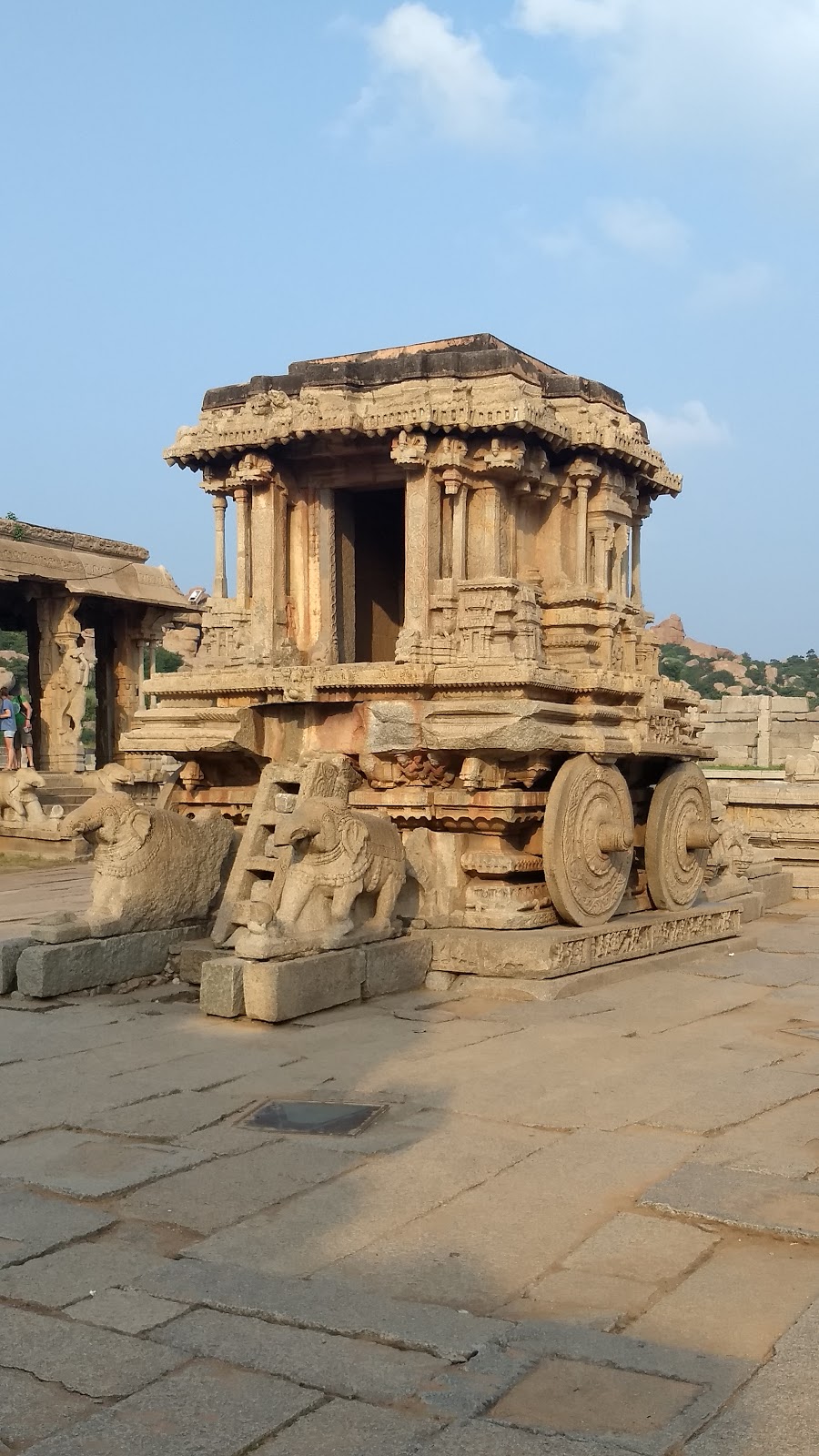पुत्रकामेष्टी
वसिष्ठांच्या आज्ञेवरून दशरथ राजाने पुत्रकामेष्टी यज्ञ केला. पुरोहित होते ऋष्यशृंग ऋषी.
राण्या करतिल पायसभक्षण
उदरी होईल वंशारोपण
त्यांच्या पोटी जन्मा येतिल, योद्धे चार महान
दशरथा, घे हे पायसदान ...
(ही सगळी अवतरणे गीतरामायणातील आहेत.)
This sculpture of King Dasharath performing the Yajna, and then his three queens Kausalya, Sumitra, Kaikayee partaking the payasam is from the Ramayan sculptures on the outer wall of Papanath temple at Pattadakkal.
You can see the marked difference in the sculpture style from yesterday's Hajar ram one.
Interesting to note is, that there is 600 years of gap between the two. Papanath dates to mid 8th century, from early Chalukya period where as Hajar ram temple is from early 15th century.
हा पुत्रकामेष्टी प्रसंग, पट्टदक्कल येथील पापनाथ मंदिरातला आहे. ह्या शिल्पाची शैली आपण काल बघितलेल्या हजारराम मंदिर शिल्पांपेक्षा अगदी वेगळी आहे.
नोंद घेण्यासारखी गोष्ट ही आहे की या दोन मंदिराच्या काळामध्ये 600 वर्षाचा फरक आहे. पापनाथ मंदिर मध्य आठव्या शतकातले आहे, तर हजारराम मंदिर पूर्व पंधराव्या शतकातील.
Hajar Ram temple also has a sculpture depicting the Putrakameshti.
Hajar ram mandir, is situated in the Royal core part of Hampi. It was built by Devaraya I of Vijayanagar. It is said to have thousand Ramayan sculptures. Hence the name Hajar Ram mandir. हजारराम मंदिरावरही पुत्रकामेष्टी प्रसंग कोरला आहे.
हे मंदिर हंपीच्या राजनिवास परिसराचा भाग आहे. ते राजपरिवाराचे खाजगी उपासनेचे मंदिर होते. ते विजयनगरच्या देवराय प्रथम याने बांधले. त्या मंदिरावर रामायणाचे हजार प्रंसग कोरले असल्याने त्याला हजार राम मंदिर म्हणतात, असा कयास आहे.






Comments
Post a Comment